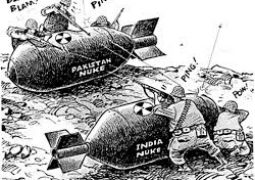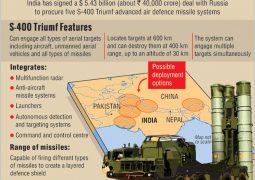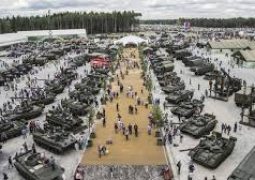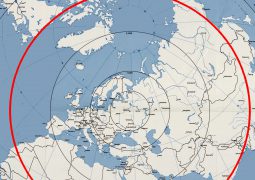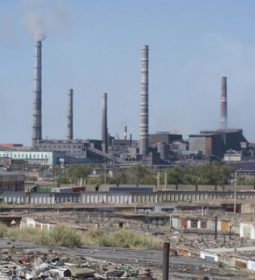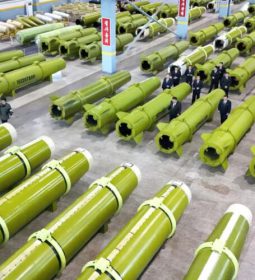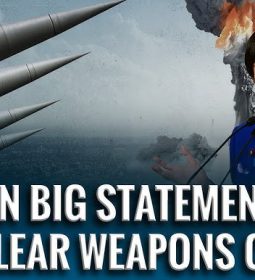Spratly’s Stakes: It takes a lot to protect our Spratlys ‘territories’
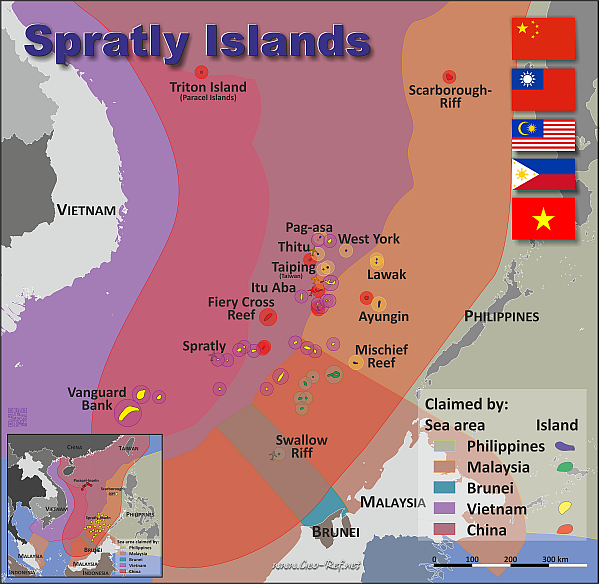
By Adrian David – March 4, 2019 @ 4:33pm
KUALA LUMPUR: IT takes an enormous amount of energy, resources and money to maintain and safeguard Malaysia’s territories in the Spratlys.
While the Royal Malaysian Navy’s (RMN) special forces (known by their Malay acronym Paskal) have the arduous task of overseeing security, defense engineering companies were commissioned to improve the facilities
and carry out expansion of the claimed “territories” into islands.
Malaysia’s serious claim on the Spratlys archipelago was mooted and envisioned by Prime Minister Tun Dr Mahathir Mohamad during his first premiership tenure (1981-2003 ).
However, Dr Mahathir, who returned to power as prime minister last year, is employing diplomacy through an Asean initiative to resolve disputes with China, which is laying entire claims on its “nine-dotted line” maritime boundary.
Dr Mahathir is all for freedom of navigation through the Spratlys and naval patrols toward off pirates and other criminals, but is against the deployment of large warships, which could spark confrontations among stakeholders.
Officials from enforcement agencies, and the maritime and defence industries, who declined to be named, gave an account of the routine involved and the assets deployed, to safeguard and maintain Malaysia’s sovereignty.
They said apart from the RMN’s Station Lima at Swallow Reef (Terumbu Layang-Layang), occupied since 1983, Malaysia has deployed its naval special forces at Station Mike (Terumbu Mantanani or Mariveles Reef ) and Station Uniform (Terumbu Ubi or Ardasier Reef), both occupied sinc e 1986, Station Sierra (Terumbu Siput or Erica Reef) and Station Papa (Beting Peninjau or Investigator Shoal), both occupied since 1999.
“Each of the four Spratly stations was initially brought as a barge and later modelled after a 40ft by 70ft naval patrol vessel, complete with facilities for dining, sleeping, communication and survival,” said one of them, who is familiar with the construction and expansion projects.
A retired naval commando said RMN utilised CB90 fast assault boats for three-week tour of duties.
“RMN had purchased 32 such boats, which operated out of Kota Kinabalu and Sandakan in Sabah, Lumut in Perak, Langkawi in Kedah and Kuantan in Pahang.
“Each CB90, powered by two engines, has a crew of six but can accommodate 14 additional personnel,” he said.
According to him, the CB90s, capable of 40 knots and armed with machine guns, were used to forewarn unauthorised vessels from encroaching on waters off
the four Malaysian “territories”.
“The naval commandos will use the International Maritime Bureau’s Channel 16 to reach the intruders.
“They will direct them to change to a different communication channel to give them orders to leave or otherwise,” he said.
A retired admiral said a Meko Class new-generation patrol vessel (NGPV) was deployed around-the-
“Each NGPV is deployed on a 20-day tour before it returns for replenishment and maintenance at the RMN Sepanggar base in Kota Kinabalu.
“It is capable of self-sustenance, including converting salt water into fresh, drinkable water via reverse-osmosis process.”
He said to optimise resources and fuel, the NGPV would operate on one of its two engines, unless it encountered adverse weather and stormy seas.
“It would take an NGPV, cruising at 15 knots, about 12 hours to travel from Station Lima to one of the other four stations, or about 18 hours from Teluk Sepanggar.
“Along the route, the vessels have to be wary of corals in shallow waters, some only a metre deep, compared with the 2,000m ocean depth,” he said.
A defence industry source said RMN operated six NGPVs — KD Kedah, KD Pahang, KD Perak, KD Terengganu, KD Kelantan and KD Selangor.
“There are two NGPVs at the RMN base in Kuantan, Pahang, and four in Kota Kinabalu.
“RMN is stretched, owing to insufficient vessels to meet its operational needs and budgetary constraints.”
Each NGPV can accommodate a crew of 25, including its skipper.
The New Straits Times Press learnt that each NGPV was equipped with, among others, a 76mm Auto Melara anti-ship gun, 30mm Oerlikon cannon, three dimensional surface-to-air radar (can capture range, altitude and speed of an enemy vessel) and a helicopter pad complete with a hangar.
- Previous End of Middle East peace process!? Flag comes down on U.S. Palestinian mission in Jerusalem
- Next Israel bans top Palestinian Waqf officials from Al-Aqsa




